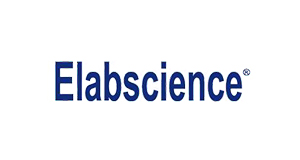Recombinant Human LIF Protein (HEK293 Cells)(Active)
Recombinant Human LIF Protein (HEK293 Cells)(Active)
SKU
ELSPKSH031989-100
Packaging Unit
100 µg
Manufacturer
Elabscience Biotechnology
Availability:
loading...
Price is loading...
Abbreviation: LIF
Target Synonym: Leukemia Inhibitory Factor;LIF;Differentiation-Stimulating Factor;D Factor;Melanoma-Derived LPL Inhibitor;MLPLI;Emfilermin;LIF;HILDA;CDF;DIA
Target Species: Human
Expression Host: HEK293 Cells
Fusion Tag: None
UNIProt ID: P15018
Background: Leukemia inhibitory factor (LIF) is a pleiotropic glycoprotein belonging to the IL-6 family of cytokines. It’s involved in growth promotion and cell differentiation of different types of target cells; influence on bone metabolism; cachexia; neural development; embryogenesis and inflammation. LIF has potent proinflammatory property; being the inducer of the acute phase protein synthesis and affecting the cell recruitment into the area of damage or inflammation. LIF is also one of the cytokines that are capable to regulate the differentiation of embryonic stem cells; hematopoietic and neuronal cells. LIF binds to the specific LIF receptor (LIFR-α) which forms a heterodimer with a specific subunit common to all members of that family of receptors; the GP130 signal transducing subunit. This leads to activation of the JAK/STAT and MAPK cascades. Due to its polyfunctional activities; LIF is involved in the pathogenic events and development of many diseases of various origin.
Activity: Measured by its ability to inhibit the proliferation of M1 mouse myeloid leukemia cells. The ED50 for this effect is typically 0.2-0.8 ng/mL.
Sequence: Met 1-Phe202
Purity: > 95 % as determined by reducing SDS-PAGE.
Formulation: Lyophilized from sterile PBS, pH 7.4.
Normally 5 % - 8 % trehalose, mannitol and 0.01% Tween80 are added as protectants before lyophilization.
Please refer to the specific buffer information in the printed manual.
Endotoxin: < 1.0 EU per ug of the protein as determined by the LAL method.
Target Synonym: Leukemia Inhibitory Factor;LIF;Differentiation-Stimulating Factor;D Factor;Melanoma-Derived LPL Inhibitor;MLPLI;Emfilermin;LIF;HILDA;CDF;DIA
Target Species: Human
Expression Host: HEK293 Cells
Fusion Tag: None
UNIProt ID: P15018
Background: Leukemia inhibitory factor (LIF) is a pleiotropic glycoprotein belonging to the IL-6 family of cytokines. It’s involved in growth promotion and cell differentiation of different types of target cells; influence on bone metabolism; cachexia; neural development; embryogenesis and inflammation. LIF has potent proinflammatory property; being the inducer of the acute phase protein synthesis and affecting the cell recruitment into the area of damage or inflammation. LIF is also one of the cytokines that are capable to regulate the differentiation of embryonic stem cells; hematopoietic and neuronal cells. LIF binds to the specific LIF receptor (LIFR-α) which forms a heterodimer with a specific subunit common to all members of that family of receptors; the GP130 signal transducing subunit. This leads to activation of the JAK/STAT and MAPK cascades. Due to its polyfunctional activities; LIF is involved in the pathogenic events and development of many diseases of various origin.
Activity: Measured by its ability to inhibit the proliferation of M1 mouse myeloid leukemia cells. The ED50 for this effect is typically 0.2-0.8 ng/mL.
Sequence: Met 1-Phe202
Purity: > 95 % as determined by reducing SDS-PAGE.
Formulation: Lyophilized from sterile PBS, pH 7.4.
Normally 5 % - 8 % trehalose, mannitol and 0.01% Tween80 are added as protectants before lyophilization.
Please refer to the specific buffer information in the printed manual.
Endotoxin: < 1.0 EU per ug of the protein as determined by the LAL method.

 Deutsch
Deutsch










